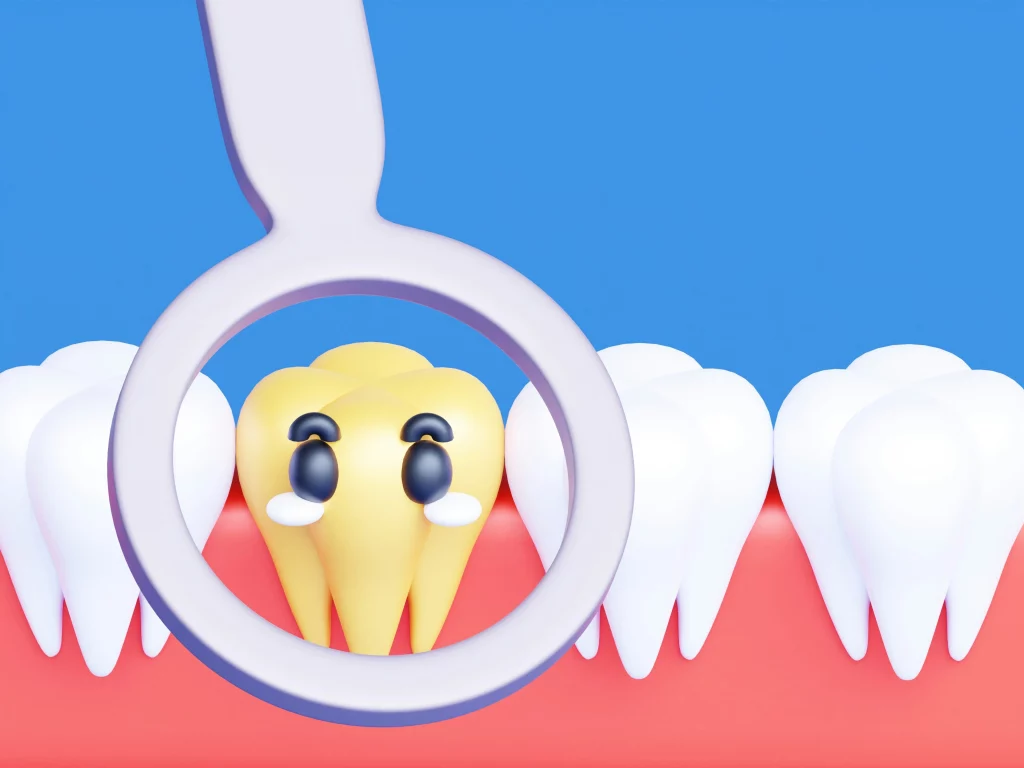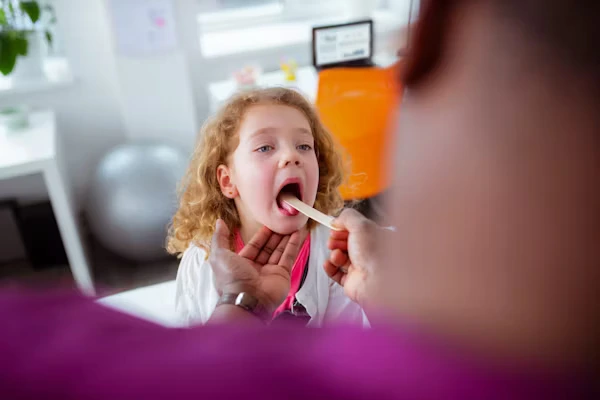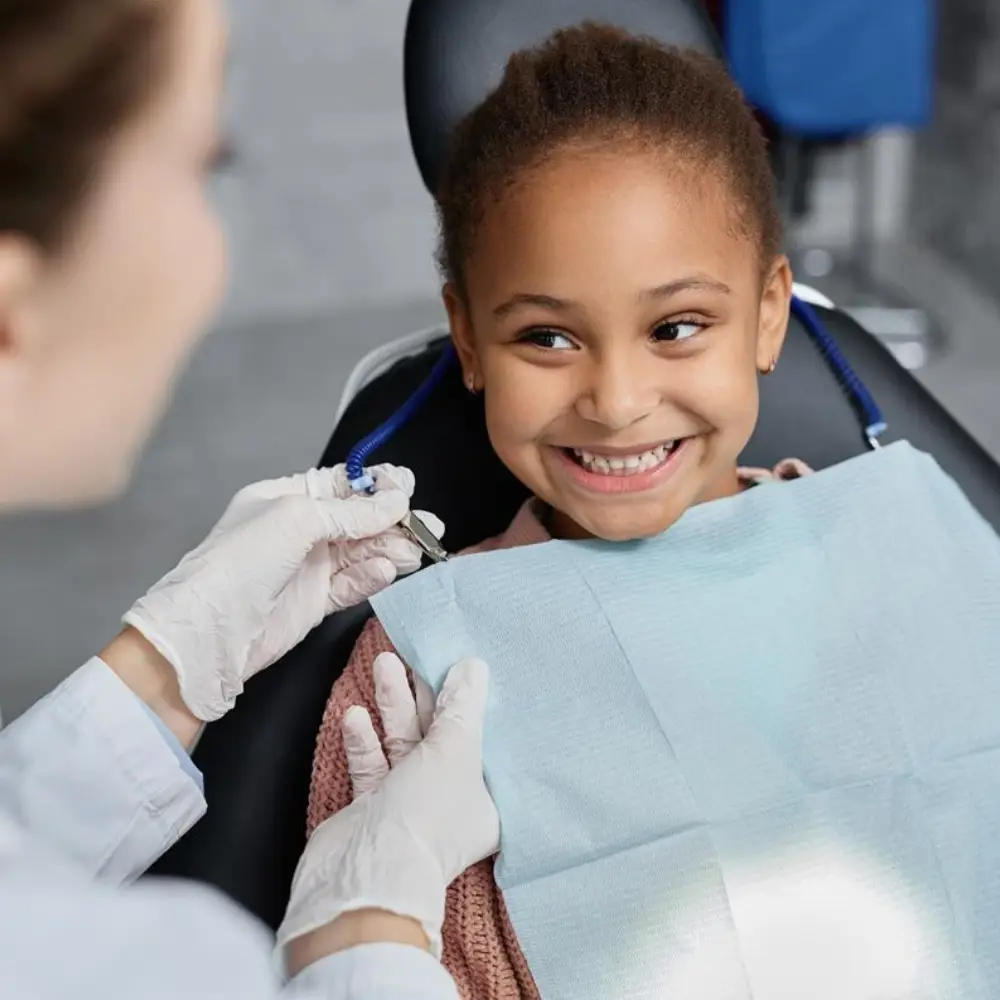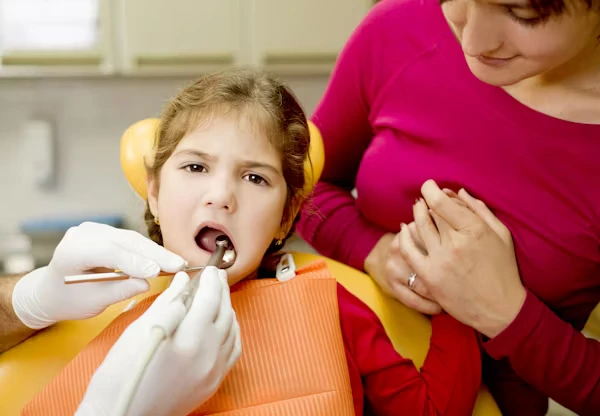A dental emergency exam represents a critical intervention when a child presents with acute oral pain, swelling, or trauma. Witnessing one’s child in such distress can be profoundly unsettling for any parent, and timely, informed action is essential to mitigate complications. Whether the incident involves a fractured primary tooth resulting from playground activity or facial swelling due to an underlying infection, prompt professional evaluation is vital. Early intervention alleviates discomfort, safeguards the integrity of developing dentition, and helps prevent progression to more serious conditions. This guide will delineate the criteria for pediatric dental emergencies, outline the procedural expectations during an urgent dental assessment, and provide strategies for securing appropriate and compassionate care when it is most urgently required.
Emergency Dental Situations in Children

Children, by their very nature, engage in frequent physical activity, which unfortunately increases the likelihood of dental trauma, much more than many caregivers might expect. It is essential to distinguish between minor incidents and genuine dental emergencies. Early identification of serious dental issues not only facilitates prompt intervention and alleviates discomfort, but also plays a crucial role in safeguarding the long-term health of a child’s teeth and gums.
Common Causes of Pediatric Dental Emergencies
Dental emergencies in children especially among toddlers and those in elementary school often stem from falls or injuries during sports activities. These incidents are practically routine at this age. Additional causes include biting into hard foods such as unpopped popcorn kernels, or chewing on objects that were definitely not meant for eating (yes, even toys). Sometimes, untreated cavities can suddenly lead to unexpected complications, catching everyone off guard.
Orthodontic appliances introduce their own set of problems; loose wires or brackets can quickly escalate from minor irritation to urgent discomfort requiring professional attention. Infections or abscesses may develop even without any obvious trauma, making them more difficult to identify until symptoms become apparent.
While some dental emergencies are unmistakable—a tooth knocked out during a game, for example—others are more understated, like persistent jaw pain or gum swelling. Nonetheless, these subtler signs still warrant prompt dental evaluation to prevent further complications. In short, any sudden dental pain or visible changes in a child’s mouth should be taken seriously and addressed without delay.
When Tooth Pain Means Urgent Attention
Children reporting tooth pain should not be dismissed as simply attempting to avoid oral hygiene or delay bedtime routines; such complaints may reflect genuine underlying issues. Persistent pain lasting several hours, pain that intensifies with pressure, or the presence of facial, gingival, or jaw swelling are significant indicators that immediate dental evaluation is warranted. Additionally, the occurrence of fever in conjunction with dental discomfort, continuous gum bleeding, or difficulties with mastication, eating, or sleeping are concerning symptoms. These manifestations may suggest advanced dental decay, pulp inflammation, or potentially a spreading infection. Early intervention is critical, both to alleviate discomfort and to forestall the development of more severe complications.
Knocked-Out or Broken Baby Teeth
Although baby teeth are ultimately temporary, they serve critical functions—facilitating speech, proper chewing, and guiding the alignment of permanent teeth. Should a child lose a baby tooth due to trauma, it is important not to attempt reinsertion, as this could potentially damage the developing adult tooth beneath. Instead, rinse the child’s mouth gently with water, use a clean, damp cloth to manage any bleeding, and apply a cold compress to minimize swelling. Contact a pediatric dentist promptly for professional advice. Timely intervention supports optimal healing and safeguards the health of adjacent teeth and gum tissue.
Cracked or fractured primary teeth demand prompt attention from a dental professional, regardless of whether the child is currently experiencing discomfort. Such injuries can expose the dental pulp, potentially leading to increased sensitivity, infection, or more serious long-term complications. It is important for a pediatric dentist to carefully assess the extent of the damage and recommend the most appropriate treatment, be it a filling, a crown, or, in certain circumstances, an extraction. Early intervention is critical for safeguarding adjacent teeth and supporting the healthy development of the underlying permanent tooth. Timely dental care can significantly impact both the immediate well-being of the child and their long-term oral health outcomes.
What Happens During a Dental Emergency Exam for Kids

Upon arrival for an emergency dental visit, the primary objectives are to alleviate the child’s discomfort and to determine the underlying cause of the problem. Pediatric dental professionals are equipped to respond swiftly while also fostering a supportive and reassuring atmosphere for both children and their caregivers. The dentist typically initiates the appointment with a careful clinical examination, which may be supplemented by radiographic imaging to detect any concealed issues. Communication is tailored to the child’s level of understanding, with the aim of minimizing anxiety and establishing trust. The immediate focus is stabilization, followed by a clear explanation of recommended treatment steps or necessary follow-up care.
Pain Evaluation and Immediate Treatment Steps
The dental emergency exam typically commences with a comprehensive assessment of the child’s presenting symptoms. The practitioner systematically inquires about the onset and duration of pain, potential exacerbating factors such as mastication or applied pressure, and any recent incidents of trauma, such as falls. This investigative process is critical for accurate diagnosis and appropriate intervention.
Following this initial evaluation, the dental professional implements targeted, immediate care. Interventions may include the application of a topical anesthetic or administration of local anesthesia to alleviate discomfort. In cases involving infection or abscess formation, drainage procedures may be performed. Alternatively, temporary restorative measures such as the placement of a provisional filling or sealant, or stabilization of a mobile tooth may be warranted. The overarching priority remains the rapid relief of the patient’s discomfort, with a concurrent focus on safeguarding the child’s long-term oral health.
Diagnostic Tools Pediatric Dentists Use
During a pediatric dental emergency, practitioners employ a range of diagnostic tools to accurately assess the underlying issue. Digital X-rays, which utilize minimal radiation, enable clinicians to visualize otherwise hidden cavities, evaluate bone structure, and identify internal tooth damage. Additionally, cold testing is performed to determine the vitality of the dental pulp, as a response to temperature can indicate whether the nerve remains healthy. In certain cases, percussion or bite testing is also utilized to localize sensitivity or detect hairline fractures that may not be visible on X-rays. Collectively, these diagnostic procedures inform the development of a precise and individualized treatment plan for the child.
These diagnostic instruments serve as essential tools for clinicians, enabling them to accurately assess whether immediate intervention is warranted or if it is more appropriate to schedule follow-up care after initial stabilization. By pinpointing the precise origin of discomfort or injury, the practitioner is equipped to make well-informed decisions that support the child’s oral health and reduce the likelihood of future complications. This methodical, evidence-based process not only provides prompt relief but also ensures the implementation of a sustainable, long-term solution.
Treatment Options Based on Age and Condition
The dentist evaluates several factors before determining an appropriate treatment plan for your child. Considerations typically include the child’s age, the significance of the affected tooth in guiding the eruption of permanent teeth, and the severity of the dental issue. Standard interventions may involve a pulpotomy, a procedure that removes the inflamed portion of the nerve to maintain the primary tooth and alleviate discomfort. If preservation is not feasible or there is potential risk to adjacent teeth, extraction is indicated. Severely compromised molars are often restored with stainless steel crowns to ensure continued chewing function and protection. In instances of active infection, antibiotics are prescribed to control its spread and facilitate recovery.
How to Prepare Your Child for an Emergency Exam

Emergencies are, by nature, unpredictable, and a parent’s composure can significantly shape a child’s experience during such moments. Children often look to their caregivers for emotional guidance; if you remain calm and reassuring, it offers them a sense of safety and stability. Gentle communication, both in words and demeanor, can help alleviate their anxiety and reinforce the idea that the dentist is there to provide care, not harm. Familiar items, such as a favored toy or blanket, may also contribute to a child’s comfort by introducing a sense of normalcy into an unfamiliar environment. Ultimately, a steady parental presence increases the likelihood that the child will feel more at ease, even under stressful circumstances.
Tips to Reduce Fear and Anxiety in Young Patients
When preparing a child for an emergency dental visit, it is important to use reassuring and accurate language. Avoid making unrealistic promises such as, “It won’t hurt.” Instead, opt for honest yet gentle phrases like, “The dentist is going to help your tooth feel better.” Transparency is key; explain that the dentist may look inside their mouth using a small mirror or camera, but avoid dramatizing the experience.
To help alleviate anxiety, consider allowing the child to bring a comforting item from home, such as a favorite toy or book, or even a pair of headphones with soothing music. Many pediatric dental clinics are equipped with amenities like cartoons, ceiling-mounted televisions, and trained staff who specialize in supporting children through potentially stressful procedures. These measures can collectively contribute to a calmer and more positive experience for young patients.
What to Bring to the Appointment
To ensure the emergency dental visit proceeds efficiently, it is advisable to arrive prepared with your child’s health insurance card, along with a detailed list of any known allergies and current medications. Additionally, if accessible, bringing prior dental records or recent X-rays can provide the attending dentist with important clinical context. A familiar comfort item, such as a blanket or a favored stuffed animal, may also help alleviate your child’s anxiety during the examination. By organizing these materials in advance, you enable the dental care team to prioritize effective, timely treatment, minimizing unnecessary interruptions.
How Parents Can Comfort Their Child
In situations involving pediatric dental emergencies, parental presence serves as a critical source of reassurance. Maintaining physical proximity such as holding the child’s hand and projecting a composed demeanor can significantly reduce a child’s distress, even amidst visible fear or tears. The parent’s calmness often sets the emotional tone for the encounter. It’s advisable to allow the dental professional to direct the conversation, thereby fostering rapport and trust between provider and patient. Throughout the visit, the parent’s consistent, supportive presence helps stabilize the environment, mitigating anxiety and facilitating a more manageable experience for the child.
Finding Emergency Pediatric Dental Care Near Me
When a child experiences dental pain outside of typical office hours, it becomes imperative to seek prompt and specialized care. In such situations, locating a pediatric dentist who offers emergency services is crucial. Many practices highlight their availability for same-day or after-hours appointments on their websites, but it is often most effective to call directly for up-to-date information regarding availability and wait times. Selecting a provider experienced in pediatric care ensures not only timely intervention but also an environment designed to ease the child’s anxiety during what can be a distressing experience.
Why You Need a Dentist That Offers Same-Day Appointments
Dental emergencies rarely adhere to conventional business hours—a reality that underscores the necessity of securing providers offering same-day or after-hours appointments. Timely intervention not only alleviates discomfort more rapidly but also minimizes the risk of complications, infection, or permanent injury. Clinics such as G&P Dental intentionally allocate daily appointments for pediatric dental emergencies, ensuring children receive swift and empathetic care without extended delays. Ultimately, being informed about where to seek immediate assistance provides invaluable reassurance during critical moments when a child’s wellbeing is at stake.
How to Choose a Child-Friendly Emergency Dental Provider
Selecting an emergency dental provider for your child demands careful consideration. Ideally, seek out clinics specializing in pediatric dentistry—these professionals have the training and experience necessary to manage the unique challenges young patients present, particularly in high-stress situations. Facilities offering sedation or established behavioral guidance techniques can greatly assist in alleviating a child’s anxiety, making the visit more manageable for both patient and caregiver.
The environment itself matters as well; a clinic with child-centric décor, approachable staff, and a tranquil atmosphere can positively influence a child’s experience. Furthermore, it is crucial that the dental team communicates aftercare instructions clearly and compassionately, ensuring parents are well-informed and comfortable with the next steps. Lastly, consulting reviews from other parents or taking a virtual tour of the facility can provide valuable perspectives before making a final decision.
Why Parents Trust Graham Park Dental
Graham Park Dental provides urgent pediatric dental care with a focus on same-day appointments and a reassuring approach for both children and their parents. Their clinicians possess extensive experience in pediatric dentistry, ensuring clear communication and alleviating anxiety during emergencies. The team promptly assesses and addresses dental issues, offering accurate diagnoses and effective interventions. With conveniently located clinics in Frederick, Gaithersburg, and Silver Spring, timely access to professional care is readily available for families in need.
Frequently Asked Questions (FAQs)
1. What qualifies as a dental emergency for a child?
Severe tooth pain, facial swelling, nonstop bleeding, knocked-out teeth, or signs of infection all require prompt dental attention. These symptoms can indicate deeper issues that shouldn’t wait, especially in children with developing teeth and gums. If your child is unable to eat, sleep, or play comfortably because of mouth pain, it’s time to call a dentist. Even minor-looking injuries, like a chipped baby tooth, can impact the permanent tooth underneath. Getting the problem evaluated early helps prevent complications and gives your child faster relief. When in doubt, it’s always safer to have a dental professional take a look.
2. Can a child’s knocked-out tooth be reinserted?
For baby teeth, re-implantation is not recommended. Trying to put a baby tooth back in place can harm the developing permanent tooth beneath it. Instead, focus on stopping any bleeding with gentle pressure, apply a cold compress to reduce swelling, and contact a pediatric dentist right away for guidance. In contrast, if a permanent tooth is knocked out, it’s a true emergency—re-implantation should happen within 30 minutes for the best chance of saving the tooth. In that case, place the tooth in milk or saliva and get to a dentist immediately.
3. Should I go to the ER or a pediatric dentist for a dental injury?
If your child has facial swelling, difficulty breathing, or the injury involves head trauma, seek emergency medical care at the ER immediately. These symptoms may signal a more serious condition that goes beyond dental treatment. For most dental-related injuries—such as broken, painful, or knocked-out teeth—a pediatric dental office is better equipped to deliver the specialized care and pain relief your child needs. Always call ahead so the dental team can prepare for your arrival and ensure your child is seen as quickly as possible.
4. Can kids get dental infections from untreated injuries?
If your child has facial swelling, difficulty breathing, or the injury involves head trauma, seek emergency medical care at the ER immediately. These symptoms may signal a more serious condition that goes beyond dental treatment. For most dental-related injuries such as broken, painful, or knocked-out teeth a pediatric dental office is better equipped to deliver the specialized care and pain relief your child needs. Always call ahead so the dental team can prepare for your arrival and ensure your child is seen as quickly as possible.
When your child is in pain, every minute matters. Graham Park Dental offers emergency exam for children with same-day availability, gentle care, and expert pediatric support. Whether it’s a toothache, swelling, or trauma, our team is ready to help your child feel safe and pain-free again. Call us today or book online at one of our convenient locations in Frederick, Gaithersburg, or Silver Spring—we’re here when your family needs us most.


